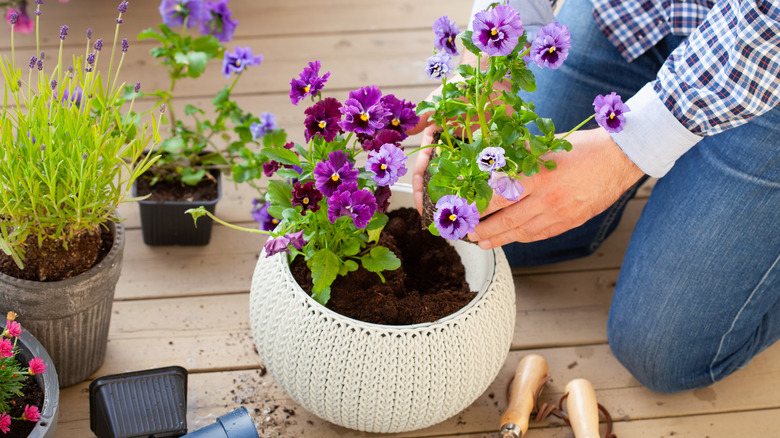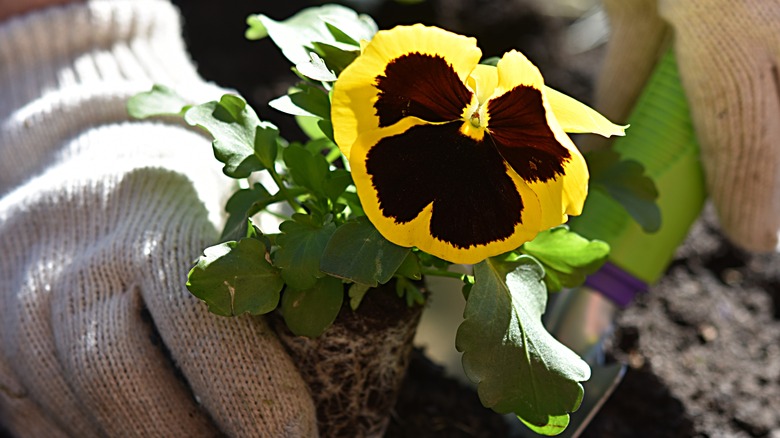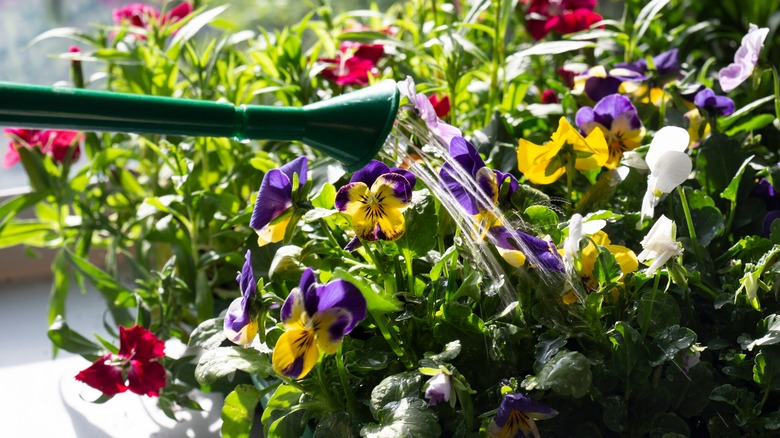The Common Mistake That's Sure To Kill Your Pansies (& What To Do Instead)
Pansies (Viola x wittrockiana) are a type of viola hybrid, and with their beautiful colors and sweet faces, they're an essential part of cool season gardens for many. While pansies are not generally difficult to grow and are surprisingly cold-hardy, they struggle if their needs are not met. One of the surest ways to kill your pansies is by neglecting to give them consistent water.
Pansies, like other violas, grow best in cool temperatures between 45 and 65 degrees Fahrenheit and are just starting to grow when temperatures begin to drop. Pansies are generally grown as either spring or fall annuals, but many varieties return or self-seed, so don't be surprised to find these little plants growing in unexpected places. Pansy plants rarely grow over 1 foot tall and wide, so they're perfect candidates for containers and hanging baskets in addition to the front of gardens. While they are powerhouses in spring and autumn, pansies generally die back once hot summer temperatures begin. Consider planting them in part shade to slightly extend their growing season.
Avoid under or overwatering pansies
Pansies thrive in moist and cool soil. When they're grown in the landscape, pansies generally require about 1 inch of water per week, either from rain or other types of irrigation. Plants grown in containers or hanging baskets usually need to be watered more often. Water your plants when the soil 1 inch below the surface has dried out. Be sure to water thoroughly, particularly if you are trying to rehydrate very dry potting mix.
While pansies grow best in moist soil, they are also prone to root diseases including black root rot (Thielaviopsis basicola), so it is essential not to overwater them or allow them to sit in waterlogged soil. If you are growing pansies in containers, be sure the pots have enough drainage holes to allow water to flow freely. Signs of root rot include wilting, yellowing leaves, and eventually death. Because most diseases that cause root rot are contagious and soil-borne, consider relocating any plants sharing a container with a plant with root rot.
Amend your soil as needed to prevent watering problems
Growing your pansies in well-draining soil goes a long way toward preventing root rot and ensuring that your plants won't be sitting in waterlogged soil. Add compost or other organic material to your soil to improve drainage if necessary. While you may have heard of adding rocks to the bottom of planters to improve drainage, this has actually been found to encourage root rot and isn't recommended. Pansies are more prone to root disease when the growing medium's pH is over 6.0 so be sure to test your soil's pH and ensure it is sufficiently acidic for pansies.
Adding compost and organic matter doesn't just help soil that drains too slowly — it can also help soil that dries out too quickly hold onto more water. Additionally, consider spreading 2 inches of mulch on top of the soil to limit the water lost to evaporation. Mulch also helps to keep the soil cooler, which may help extend your pansies' growing season.


